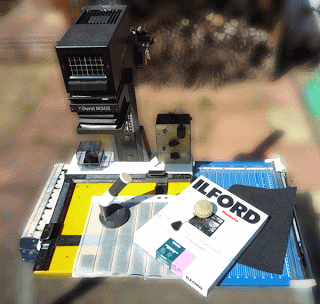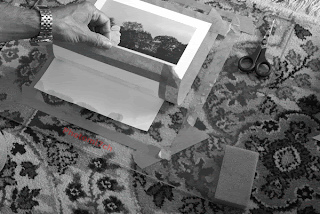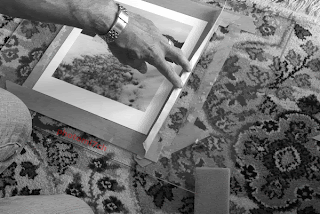The
results are not faultless.
I will come to that later, first I have forgotten to mention that the
films being processed are Ilford FP4+, used at ISO 125. 120 format
producing a 6x6 negative. Now I'll outline the procedure used.
The
working solution was made up using filtered tap water at 21 degrees
C and poured in straight away.
Once
the developer was in the tank I agitated it continuously for the
first minute.
The
tank was inverted twice every 20 seconds and tapped to dislodge any
bubbles.
stopped,
fixed and washed as normal.
I did not re-dip
the film in the developer after fixing to intensify the staining.
This is up to you but I was advised it did not make a noticeable
difference.
Whenever I
process a film I find that I'm a bit apprehensive as to what the
outcome will be, even more so with a new developer! so just before I
wash the film I have a little look to see if there is a negative, so
far I have not been disappointed.
 First
impression, once the
film was dry I noticed there weren't any water staining marks, that's
a bonus. The film base has a slight mauve colour to it which
increased in strength slightly with longer development times. The
negatives overall were evenly processed. The contact prints revealed
that there are dark spots on the neg's which I think may have been
caused by air bubbles. I have just processed another film this time I
gave it a two-minute pre-soak and there are no black spots on the
negs.
First
impression, once the
film was dry I noticed there weren't any water staining marks, that's
a bonus. The film base has a slight mauve colour to it which
increased in strength slightly with longer development times. The
negatives overall were evenly processed. The contact prints revealed
that there are dark spots on the neg's which I think may have been
caused by air bubbles. I have just processed another film this time I
gave it a two-minute pre-soak and there are no black spots on the
negs.
To
re-cap: Two minute
pre-soak, pour developer in and agitate for first minute, then invert
tank twice every twenty-seconds, stop,fix and wash as normal. You
should get some very very fine grain negs.
I have printed
four pictures so far. The first two on Foma 113 variant gloss, F11
grades 2.5 and 3 and they have a cool tone to them. The next two on
Ilford multi-grade gloss, F11 grade 2 and 2.5, these have a warmish
tone to them. Both papers were developed in Ilford -multi-grade print
dev.

The pictures that
appear in this post have been scanned from prints and do not convey
how well they have printed. These are straight prints with no dodging
or burning in. I wanted to show how well the negatives have printed
and how evenly they have developed. I will be producing a final print
set on FB paper at a later date using a mix of ordinary and warm tone
developers.



































